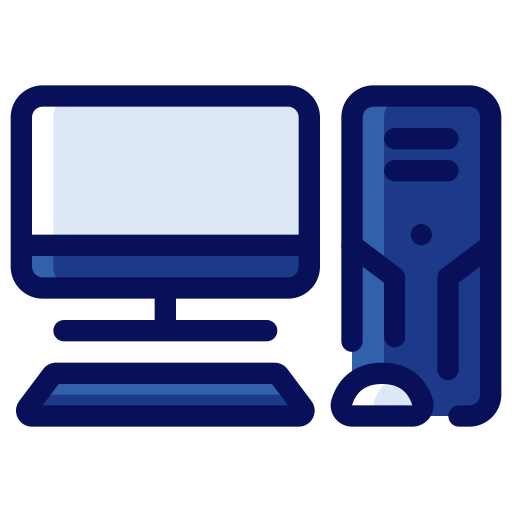I’d just like to interject for a moment. What you’re referring to as Alpine Linux Alpine Linux is in fact Pine’s fork, Alpine / Alpine Linux Pine Linux, or as I’ve taken to calling it, Pine’s Alpine plus Alpine Linux Pine Linux. Alpine Linux Pine Linux is an operating system unto itself, and Pine’s Alpine fork is another free component of a fully functioning Alpine Linux Pine Linux system.
- 0 Posts
- 350 Comments

 171·22 天前
171·22 天前Retrieval-Augmented Generation (RAG) is probably the tech you’d want. It basically involves a knowledge library being built from the documents you upload, which is then indexed when you ask questions.
NotebookLM by Google is an off the shelf tool that is specialized in this, but you can upload documents to ChatGPT, Copilot, Claude, etc., and get the same benefit.
If you self hosted, Open WebUI with Ollama supports this, but far from the only one.

 2·29 天前
2·29 天前If you dislike decentralization, then that’s like being on an instance that’s banned every other instance.
Do you mean that you dislike defederation?

 52·30 天前
52·30 天前Wow, there isn’t a single solution in here with the obvious answer?
You’ll need a domain name. It doesn’t need to be paid - you can use DuckDNS. Note that whoever hosts your DNS needs to support dynamic DNS. I use Cloudflare for this for free (not their other services) even though I bought my domains from Namecheap.
Then, you can either set up Let’s Encrypt on device and have it generate certs in a location Jellyfin knows about (not sure what this entails exactly, as I don’t use this approach) or you can do what I do:
- Set up a reverse proxy - I use Traefik but there are a few other solid options - and configure it to use Let’s Encrypt and your domain name.
- Your reverse proxy should have ports 443 and 80 exposed, but should upgrade http requests to https.
- Add Jellyfin as a service and route in your reverse proxy’s config.
On your router, forward port 443 to the outbound secure port from your PI (which for simplicity’s sake should also be port 443). You likely also need to forward port 80 in order to verify Let’s Encrypt.
If you want to use Jellyfin while on your network and your router doesn’t support NAT loopback requests, then you can use the server’s IP address and expose Jellyfin’s HTTP ports (e.g., 8080) - just make sure to not forward those ports from the router. You’ll have local unencrypted transfers if you do this, though.
Make sure you have secure passwords in Jellyfin. Note that you are vulnerable to a Jellyfin or Traefik vulnerability if one is found, so make sure to keep your software updated.
If you use Docker, I can share some config info with you on how to set this all up with Traefik, Jellyfin, and a dynamic dns services all up with docker-compose services.

 0·1 个月前
0·1 个月前As a user, you can:
- Review instance and community rules prior to participating
- Review the moderator logs to confirm that moderation activities have been in line with the rules
- If you notice a discrepancy, e.g., over-moderation, you can hold the mods accountable and draw attention to it or simply choose not to engage in that instance or community
- Host your own instance
- Create communities in an existing instance or your own instance
If you host your own instance and communities within that instance, then at that point, you have full control, right? Other instances can de-federate from yours.
I recommend a used 3090, as that has 24 GB of VRAM and generally can be found for $800ish or less (at least when I last checked, in February). It’s much cheaper than a 4090 and while admittedly more expensive than the inexpensive 24GB Nvidia Tesla card (the P40?) it also has much better performance and CUDA support.
I have dual 3090s so my performance won’t translate directly to what a single GPU would get, but it’s pretty easy to find stats on 3090 performance.
Per OP, the second post is directing to something different. It’s duplicated visually but not an actual duplicate.

 2·1 个月前
2·1 个月前The above post says it has support for Ollama, so I don’t think this is the case… but the instructions in the Readme do make it seem like it’s dependent on OpenAI.

 1·1 个月前
1·1 个月前stuck with the GPL forever
If you accept a patch and don’t have the ability to relicense it, you can remove it and re-license the new codebase. You can even re-implement changes made by the patch in many cases, whether those changes are bug fixes or new features.
If you re-implement the change, you do need to ensure this is done in a way that doesn’t cause it to become a derivative work, but it’s much easier if you have copyright to 99% of a work already and only need to re-implement 1% or so. If you’ve received substantial community contributions and the community is opposed to relicensing, it will be much harder to do so.
A clean room implementation - where the person rewriting the code doesn’t look at the original code, and is only given a description of the functionality - which can include a detailed description of the algorithm - is the most defensible way to perform such a rewrite and relicense, but it’s not the only option.
You should generally consult an attorney when relicensing and shouldn’t just do it casually. But a single patch certainly doesn’t mean you’re locked in forever.

 3·2 个月前
3·2 个月前Are you saying that NAT isn’t effectively a firewall or that a NAT firewall isn’t effectively a firewall?

 3·2 个月前
3·2 个月前Is there a way to use symlinks instead? I’d think it would be possible, even with Docker - it would just require the torrent directory to be mounted read-only in the same location in every Docker container that had symlinks to files on it.
I didn’t see a link - it’s !trans_joy@lemmy.blahaj.zone for anyone who’s looking for it.

 1·2 个月前
1·2 个月前Depending on setup this can be true with Jellyfin, too. I have a domain registered, use dynamic DNS, and have Traefik direct a subdomain to my Jellyfin server. My mobile clients are configured using that. My local clients use the local static IP.
If my internet goes down, my mobile clients can’t connect, even on the LAN.

 17·2 个月前
17·2 个月前Further, “Whether another user actually downloaded the content that Meta made available” through torrenting “is irrelevant,” the authors alleged. “Meta ‘reproduced’ the works as soon as it made them available to other peers.”
Is there existing case law for what making something “available” means? If I say “Alright, I’ll send you this book if you want, just ask,” have I made it available? What if, when someone asks, I don’t actually send them anything?
I’m thinking outside of contexts of piracy and torrenting, to be clear - like if a software license requires you to make any changed versions available to anyone who uses the software. Can you say it’s available if your distribution platform is configured to prevent downloads?
If not, then why would it be any different when torrenting?
Meta ‘reproduced’ the works as soon as it made them available to other peers.
The argument that a copyrighted work has been reproduced when “made available,” when “made available” has such a low bar is also perplexing. If I post an ad on Craigslist for the sale of the Mona Lisa, have I reproduced it?
What if it was for a car?
I’m selling a brand new 2026 Alfa Romeo 4E, DM me your offers. I’ve now “reproduced” a car - come at me, MPAA.

 11·2 个月前
11·2 个月前OP: “Zen 5 CPU”
You: “Unpatched Zen 1 through Zen 4 CPUs are vulnerable”
You: Is it vulnerable?
???

 1·2 个月前
1·2 个月前Where did I contest your point?

 1·2 个月前
1·2 个月前The president won [the] popular vote
Only if you ignore the huge amounts of voter suppression. If you don’t, then he lost the popular vote and the electoral vote - netting 45.8% of the popular vote to Kamala’s 52.7%, and he earned at most (and probably less than) 252 electoral votes to Kamala’s 286.
If you’re in the US, automatic is fine. Manuals make up like 1 percent of new cars and maybe 4% of used cars here. It doesn’t hurt to know how to drive one, but it doesn’t benefit you much, either. I drove a manual once, but it was a rental in another country. I’ve never been faced with needing to - or even having the opportunity to - drive a manual in the US.
However, learning on a manual does make it easier to understand certain ways of how cars work, even on automatics (less so on CVTs), so if you like understanding things more, I recommend manual even in the US. You can still get that understanding driving automatics, though - just a bit more effort.
Outside the US, most places I know of manual is the default. If manuals make up even 30 percent or so of cars where you live, I strongly suggest learning to drive one.
I can’t guess where your interests lie
OP does say they have a boyfriend



I’d recommend Colemak Mod-DH, personally - it seems ergonomically superior and switching later is a bit of a pain.